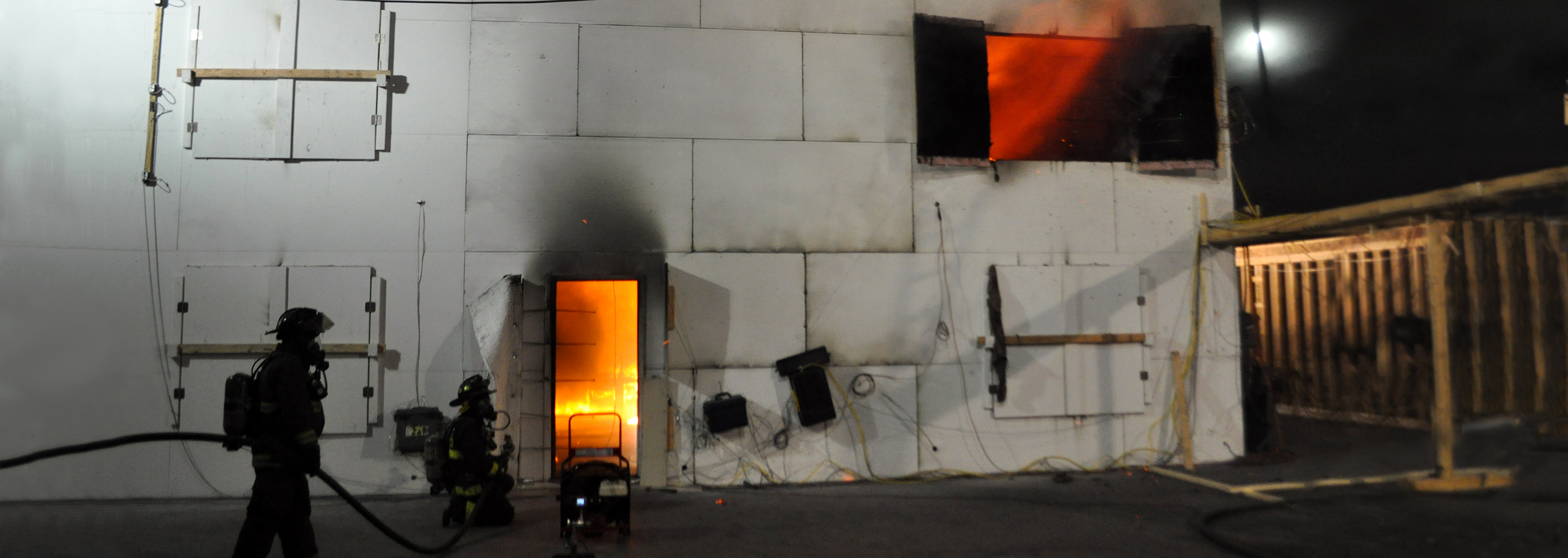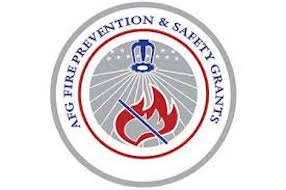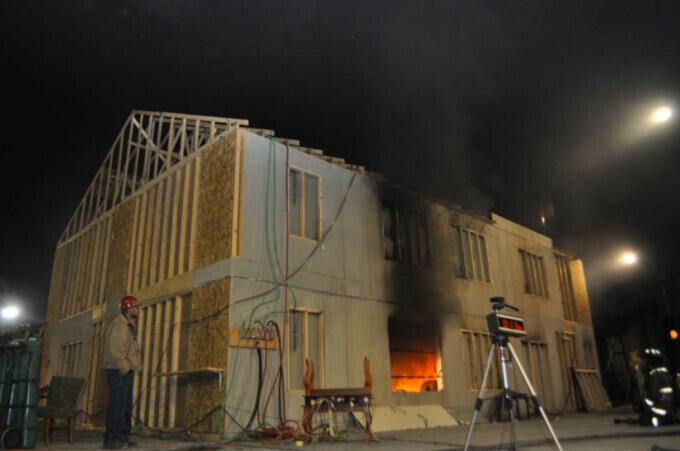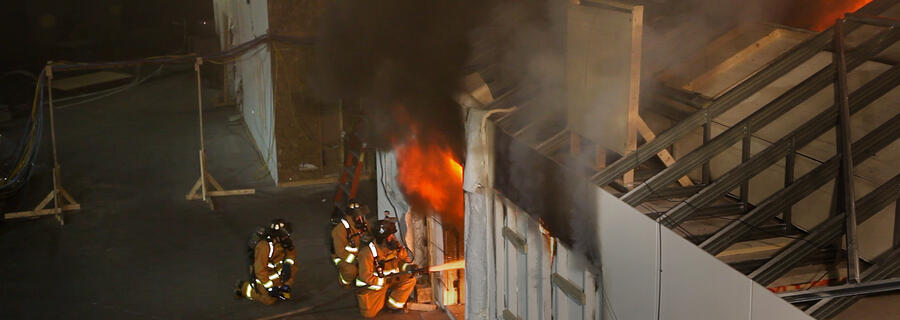There is a continued tragic loss of firefighter and civilian lives, as shown by fire statistics. One significant contributing factor is the lack of understanding of fire behavior in residential structures resulting from the use of ventilation as a firefighter practice on the fire ground. The changing dynamics of residential fires as a result of the changes in home construction materials, contents, size and geometry over the past 30 years compounds our lack of understanding of the effects of ventilation on fire behavior. Positive Pressure Ventilation (PPV) fans were introduced as a technology to increase firefighter safety by controlling the ventilation. However, adequate scientific data is not available for PPV to be used without increasing the risk to firefighters.
This fire research project acquired experimental data from full-scale house fire experiments and examined positive pressure ventilation used during fire attack, suppression techniques and the resulting fire dynamics. The experimental results were used to develop tactical considerations outlining firefighting ventilation and suppression practices to help reduce firefighter death and injury. This fire research project drew from and enhanced previous DHS AFG sponsored research (EMW-2008-FP-01774) which studied the impact of horizontal ventilation through doors and windows and (EMW-2010-FP-00661) which studied the impact of vertical ventilation through the roof. This project addressed the concerns the firefighter community has expressed and provided a baseline for choosing the most appropriate type or types of ventilation on the fire ground. The fire service now has scientific based comparisons between the three types of ventilation used on the fire ground everyday across the country. A comprehensive fire service outreach program was created to ensure the science met the street.
The residential structures utilized mirrored those used from the horizontal ventilation (EMW-2008-FP-01774) and vertical ventilation (EMW-2010-FP-00661) to allow for direct comparisons. The full scale testing was broken into two phases. The first phase incorporated testing both the electric and gas powered 18” fan from six major manufactures to compare their performance capabilities. The fans were ranked according to their total flow and pressure capabilities. The fan which most closely matched the average flow of all fans was selected for phase two, the full scale fire experiments. Twenty five full scale fire experiments were conducted, fifteen in the single story and ten in the two story structure.
Tactical Considerations
The results of the experiments were then examined with the fire service technical panel and utilized to develop 16 fire service tactical considerations for use when conducting positive pressure attack or positive pressure ventilation. For more information on these tactical considerations download the full project report in the resources section above. These tactical considerations include:
- Understanding the Basics of Positive Pressure
- Horizontal, Vertical and Positive Pressure Attack are different tactics
- The setback of the fan or development of a cone of air is not as important as the exhaust size
- During PPA, an ongoing assessment of inlet and exhaust flow is imperative to understanding whether or not a fan flow path has been established and if conditions are improving
- Positive Pressure Attack is Exhaust Dependant
- An outlet of sufficient size, must be provided, in the fire room to allow for effective PPA
- During PPA, creating additional openings not in the fire room will create additional flow paths making PPA ineffective with the potential to draw the fire into all flow paths
- The safety of PPA is decreased when the location and extent of the fire is not known with a high degree of certainty
- PPA will not be effective on a fire located in an open concept floor plan or any floor plan with high ceilings
- The application of water, as quickly as possible, whether from the interior or exterior prior to initiating PPA will increase the likelihood of a successful outcome
- PPA is not a replacement for using the reach of your hose stream
- During PPA, extension into void spaces when using PPA is directly related to the exhaust capabilities of the void space
- PPA does not negatively affect the survivability of occupants behind a closed door
- When PPV is used post fire control, in single story residential structures, the more openings made in the structure during PPV, the more effective it is at ventilating the structure
- When PPV is used post fire control, it is important to assess for extension
- When PPV is used post fire control, starting or turning in the fan immediately after fire control will provide the most benefit




